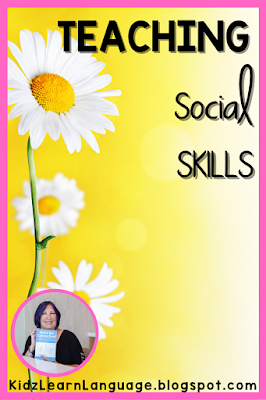I wrote last week about developing social skills and directly teaching aspects of the “hidden curriculum” to our students. It is, as you would expect, difficult to teach social skills to some students who do not speak and have limited language skills.
The best way to teach language skills - including pragmatics - is in context. We tell communication partners all of the time to engage AAC users in genuine communication interactions, and to practice both functional linguistic and “real” social linguistic skills.
I have encountered difficulties in middle and high schools with creating genuine social interactions between students. Sometimes it’s teachers raising objections, and other times peers just don’t want to be bothered with helping out, or can’t find a time and place to provide some support.
One way I have been able to make peers unwitting partners is by taking the student with whom I am working and hanging out in the Quad - the Southern California version of the cafeteria. Watch interactions among his fellow students. Middle and high schools are full of drama. It is pretty easy to discover pairs and small groups being happy, angry, sad, excited, etc.
Observe briefly with your student, and then ask what they think is going on. Did they see the facial expressions and body language? Did those support the words they might have heard? What might be going on.
If you have a small group of students, try some role playing. Simulating experiences is fairly easy. The hard part is thinking of all of the situations you might need to address.
Judy Endow, in the article I sited last week, gives the example of taking “Free Cookies,” without realizing that really meant ‘1 per customer.’ Your students might be able to recall situations that left them baffled or feeling badly without knowing why. Other students might be able to offer some suggestions, as well.
I have a set of questions and problems I created a number of years ago for use with some high school students and young adults. They have worked well with a number of groups, and are available in my TpT store here.
A number of years ago I heard Barry Prizant speak. He said that, for young children with ASD, if they knew the “right things” to say on the playground - could run around yelling, “I’m He-Man; King of the Universe,” for example - they were accepted as a part of the playground group.
There are so many skills we need to teach our AAC users. Answering and asking questions, commenting, explaining feelings, and informing, among others. Let’s not forget those skills that help them to fit in.





No comments
Post a Comment